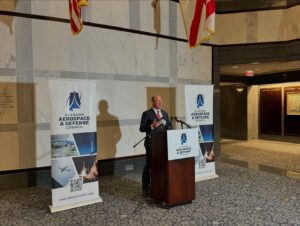Public meeting on Chronic Wasting Disease set for September 22 in Florence

Deer hunters are encouraged to attend a meeting in Florence hosted by the Wildlife and Freshwater Fisheries (WFF) Division of the Alabama Department of Conservation and Natural Resources (ADCNR). The public meeting will be in Florence, Alabama, on Thursday, September 22, to discuss Chronic Wasting Disease (CWD) detected in Lauderdale County earlier this year. Two cases were found in northern Alabama this year, just four years after the deer disease was first discovered in Mississippi. CWD is a transmissible disease found to affect deer, elk, and other cervids. It is believed to be caused by an infectious prion and has an extended incubation period. Diagnosis requires examination of brain and lymphatic tissue. Infected deer become emaciated, behave erratically, and eventually die. CWD is caused by a denatured protein called a prion. The best-known prion disease is “Mad cow disease” (bovine spongiform encephalopathy) which devastated the beef and dairy industry in Great Britain after it killed a number of people who had eaten the affected meat. Controlling the disease did enormous damage to the agricultural economy in Great Britain and resulted in government orders to destroy 4.5 million cattle. Most diseases are infectious diseases where a pathogen invades the body, and the immune system fights the invading species. Prions are not well understood but build up in the brain and spinal system until it hits a critical mass, and the animal goes into an inevitable decline. Since a prion is not a living thing, it remains even after the deer has died. Deer are contaminated from exposure to the corpse of dead deer who were infected with CWD. Many unethical hunters take the meat from a deer they have harvested and dump the head and other parts in the woods. If that deer were infected with CWD, the prions will remain. USDA research on CWD shows that it can remain in the soil for decades; thus, a property that has had CWD-infected deer on it likely will still have the CWD prions decades later, even if the area was completely depopulated with cervids. The Centers for Disease Control and Prevention (CDC) reports no strong evidence that CWD can infect humans. Researchers have been able to infect squirrel monkeys and laboratory mice with CWD. As a precaution, no brain or spinal cord materials should be consumed by humans. ADCNR has regulations against importing deer, elk, mule deer, moose, or other cervid meat from states infected with CWD unless it is completely deboned. The regulations are designed to prevent the spread of CWD to Alabama, but to be effective, everyone must participate. The meeting will take place from 6:00 to 8:00 p.m. at the University of North Alabama’s Norton Auditorium, located at 1 Harrison Plaza. The public and media are both encouraged to attend. WFF officials will provide an overview of ADCNR’s response to CWD, including a new hunting regulation and the CWD Management Zone covering Lauderdale and Colbert counties. The presentation will be followed by a question and answer session. Due to CWD detection in Lauderdale County, ADCNR enacted a new regulation for Lauderdale and Colbert counties, as outlined in Alabama’s CWD Surveillance and Response Plan during the remainder of the 2021-2022 hunting season. All of Lauderdale and Colbert counties are designated as a CWD Management Zone (CMZ). The area west of U.S. Highway 43 in Lauderdale County to the Mississippi and Tennessee state lines and south to the Tennessee River is designated a High-Risk Zone (HRZ). The remainder of Lauderdale County and all of Colbert County are designated as the Buffer Zone. Last winter, there were no seasonal or daily bag limit restrictions on antlered or unantlered deer within the CMZ. There was also no antler restrictions for deer harvested on privately-owned or open-permit public lands in Lauderdale or Colbert counties through the remainder of the 2021-2022 deer season. Carcasses or other deer parts could not be moved outside the HRZ or CMZ. Small game hunting and waterfowl hunting were closed for the remainder of the 2021-2022 deer season for several of the Wildlife Management Areas (WMA) and Community Hunting Areas (CHA) within the zone. ADCNR will reveal new CWD rules for the 2022-2023 hunting season. ADCNR promotes wise stewardship, management, and enjoyment of Alabama’s natural resources through four divisions: Marine Resources, State Lands, State Parks, and Wildlife and Freshwater Fisheries. Bow season begins in October. Check your specific zone for exact season dates. To connect with the author of this story, or to comment, email brandonmreporter@gmail.com.
Life expectancy declines again

A new Centers for Disease Control and Prevention (CDC) report indicates that American life expectancy dropped for the second year in a row in 2021. Average U.S. life expectancy has dropped to 76.1 years. That is the lowest number recorded since 1996. American male life expectancy at birth has dropped 3.1 years since 2019 to 73.2 years for a male infant born today. American females have also seen their life expectancy at birth plummet 2.7 years to just 79.1 years. The life expectancy gap between American men and women has increased to 5.9 years. CDC officials are blaming COVID-19 for the sharp rise in deaths over the past two years. According to the CDC, Alabama has the third lowest life expectancy in the country at 73.2 years of age (2020 numbers). Hawaii has the highest at 80.7 years. The top ten causes of death in Alabama are: · Heart Disease · Cancer · COVID-19 · Chronic Lower Respiratory Diseases · Stroke · Alzheimer’s Disease · Accidents · Diabetes · Influenza/Pneumonia · Kidney Disease Alabama had a COVID death rate of 89.3 per 100,000 people in 2020. The state also had a drug overdose death rate of 22.3 per 100,000 Alabamians and a firearms death rate of 23.6 per 100,000. The murder rate in Alabama is 14.2 per 100,000 people. The study showed that there remain wide variations nationally between races in health outcomes. American Indians have been hit the hardest by COVID-19. Their life expectancy has fallen an average of 6.6 years since 2019 to just 65.2 years in 2021. That is the same life expectancy as the total U.S. population back in 1944. Since 2019, Non-Hispanic Whites have seen their life expectancy plunge from an average of 2.4 years to 76.4 years in 2021. Life expectancy in the American Black population dropped from 74.8 years in 2019 to 70.8 years in 2021. Asians have the highest life expectancy in the country at 83.5 years, but that is still down 2.1 years from 2019. Hispanics are second best, with a life expectancy of 77.7 years, down 4.2 years from 2019. According to the Alabama Department of Public Health (ADPH), 20,048 Alabamians have died from COVID-19 since the global pandemic reached the state in March 2020. That includes 3,298 who died in 2022. Over a million Americans have been killed by COVID-19. COVID-19 is caused by the virus SARS-CoV-2. It is a time of coronavirus, but the most deadly coronavirus in recorded history. COVID-19 was first diagnosed in Wuhan City, Hubei Province, China, in late 2019. The National Center for Health Statistics (NCHS) collects and disseminates the nation’s official vital statistics through the National Vital Statistics System. To connect with the author of this story, or to comment, email brandonmreporter@gmail.com.
Barry Moore supports legislation to designate fentanyl as a Weapon of Mass Destruction
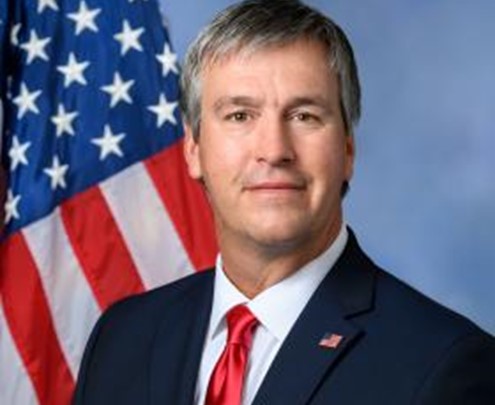
On Monday, Colorado Congresswoman Lauren Boebert introduced the Fentanyl is a WMD Act to classify fentanyl as a weapon of mass destruction (WMD). This act comes in response to the rise in fentanyl deaths, which Boebert believes is caused by the ‘Biden Border Crisis.’ According to the Centers for Disease Control and Prevention, overdose deaths involving opioids increased from an estimated 70,029 in 2020 to 80,816 in 2021. Deaths from fentanyl, a synthetic opioid, rose to 71,238 in 2021 from 57,834 in 2020. In a speech yesterday, Rep. Barry Moore announced his support for Boebert’s legislation, agreeing that the border crisis was exacerbating the issue. “Last year alone, fentanyl killed more Americans than any weapon of mass destruction in our nation’s history,” noted Moore. “Fentanyl is now the number one cause of death for Americans aged 18-45 – not guns, not COVID-19, not even car accidents, but fentanyl. CDC numbers show more total drug overdose deaths last year in the U.S. than those killed by the atomic bomb blasts that ended World War II,” Moore said. “The direct cause of so many American deaths from fentanyl is the Biden administration’s surrender at our southern border,” Moore said. “In 2021 alone, more than 11,000 pounds of fentanyl was seized at our border. So, just imagine how much fentanyl got across the border and into our communities.” By listing fentanyl as a WMD, the legislation would direct the Department of Homeland Security’s Countering Weapons of Mass Destruction Office to allocate resources to address the fentanyl epidemic. Rep. Boebert stated, “Back home in Colorado, almost everyone I talk to knows someone who has died from fentanyl. Fentanyl is America’s silent killer and is now the leading cause of death for Americans aged 18 to 45. The saddest thing about the fentanyl crisis is that it is preventable. National security experts know that the vast majority of deadly fentanyl plaguing our communities comes across the southern border. Just last year, Border Patrol encountered enough fentanyl at the border to kill every American seven times over. There is no way around it—the Biden Border Crisis is killing Americans. It is time to call fentanyl what it is: a weapon of mass destruction that is destroying our nation.” According to 1819 News, the Congressional Research Service (CRS) claimed that designating fentanyl as a WMD was unnecessary to address the issue. Additionally, they stated that the Homeland Security Act of 2002 “lacks a provision for classifying fentanyl as a WMD.” The report stated, “A statutory designation of fentanyl as a WMD does not appear necessary for additional executive branch action to address fentanyl as an illicit drug or chemical weapon, Congress may consider developing legislation to improve upon perceived shortcomings in the U.S. government’s approach to addressing fentanyl.”
Survey shows continued apprehension among rural residents regarding COVID-19 vaccinations
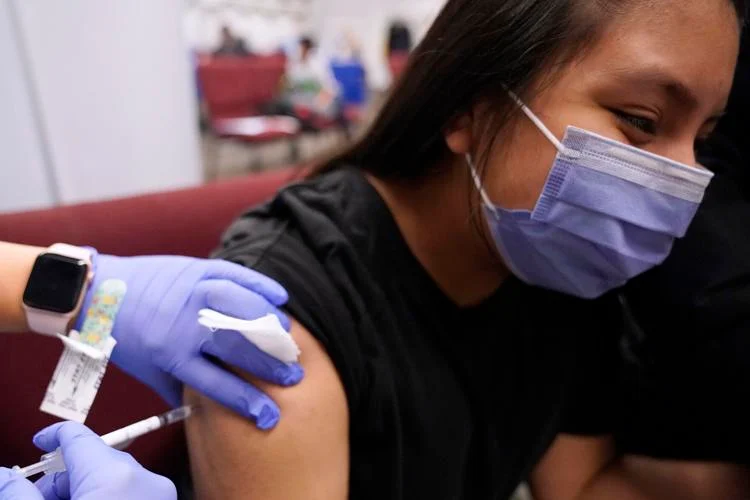
A survey by a rural health organization regarding COVID-19 vaccines shows apprehension by many about getting the shot. The National Rural Health Organization, with locations in Illinois, paired with the U.S. Centers for Disease Control and Prevention to find out how adults, parents and teens in rural areas feel about getting vaccinated. Only 15% of rural adults and 14% of teens believe vaccines are good protection from diseases. Nearly 40% of rural teens said they are concerned the vaccines may result in serious side effects, which Amy Elizondo, chief strategy officer with the NRHA, said is very revealing. “We wanted to get perspective within these groups that we haven’t readily heard from, in particular rural teenagers, the first time they have been surveyed in this particular topic area,” Elizondo said. Vaccination rates in many rural areas of Illinois lag behind urban areas, as many southern counties are reporting full vaccination rates lower than 40%, including in Alexander County, where less than a fourth of the population is fully vaccinated. Thirty percent of adults surveyed said the information they receive about vaccines is reliable and trustworthy, but many were not so sure. “When looking at barriers to vaccination, folks reported feeling overwhelmed by the information and misinformation,” Elizondo said. Health care providers are the most trusted source for COVID-19 vaccine information across all three rural samples (71%+ say they trust their health care provider “a lot” or “some” when receiving COVID-19 vaccine advice or information) of the options tested. When asked about their current level of concern about COVID-19 in general, 31% of rural adults said they were very concerned, while only 12% of teens reported the same. This poll was conducted between Feb. 1 and Feb. 22 among a sample of 1,806 rural adults, 475 rural parents, and 220 rural teens. Republished with the permission of The Center Square.
Growing number of Democrats call on Joe Biden to reverse plan to end Title 42

A Democratic governor and several Democrats in Congress are calling on President Joe Biden to reverse the U.S. Centers for Disease Control and Prevention’s decision to end Title 42. Title 42, a public health authority that enables federal agents to quickly expel illegal immigrants during a public health emergency, has been in effect since March 2020. On April 1, the CDC announced it was terminating it on May 23. U.S. Rep. Henry Cuellar, a Democrat from the border town of Laredo, Texas, told Fox News Sunday that Biden was listening to immigration activists, not border communities or their representatives such as himself. “But my question is, who’s listening to the men and women in green and in blue?” he asked, referring to Customs and Border Protection and Border Patrol agents. “And more importantly, who’s listening to the border communities, the sheriffs, the landowners, the rest of the people that live on the border?” he asked. Cuellar is facing a tough runoff election May 24 and, if he wins, a tough general election in November. “How can we have the federal public emergency extended to July 15 and say there’s a pandemic going on in the United States, but at the border, everything’s fine, and just let people into the United States,” he said, adding, “Those are mixed messages.” He also addressed the administration’s mixed messages when it comes to mandates. “How can you ask for international travelers to make sure … they’re vaccinated or even show their COVID-19 negative tests if they fly in?” Cueller asked, referring to vaccine mandates imposed on legal travelers when no such requirements exist for those who’ve entered the U.S. illegally and are then released into the U.S. by the Biden administration. Cuellar also posted pictures of existing overcrowded holding facilities at the border with Title 42 in place. “Title 42 is critical to ensuring the health and safety of migrants, law enforcement, and border residents,” he said. Democratic Nevada Gov. Steve Sisolak wrote Biden late last week expressing concerns about Title 42 ending. He asked him “to reconsider any intentions of undoing Title 42 until there is a comprehensive plan for how the United States can avoid the humanitarian crisis this policy change would spark.” The CDC issued a statement on April 1 announcing it was ending Title 42 due to “an increased availability of tools to fight COVID-19 (such as highly effective vaccines and therapeutics)” and said, “suspending the right to introduce migrants into the United States is no longer necessary.” Instead, the Department of Homeland Security was implementing “appropriate COVID-19 mitigation protocols, such as scaling up a program to provide COVID-19 vaccinations to migrants and prepare for resumption of regular migration under Title 8,” the CDC said. But on April 12, Health and Human Services Secretary Xavier Becerra announced he was renewing the national public health emergency order “as a result of the continued consequences of the Coronavirus Disease 2019 (COVID-19) pandemic.” He said the public health emergency “exists and has existed since January 27, 2020, nationwide,” and was renewed by the Trump and Biden administrations eight times. Set to expire April 15, it was renewed effective April 16 for an additional 90 days. Arizona Democratic U.S. Sen. Krysten Sinema argues extending the public health emergency “proves the need to delay lifting Title 42 to protect the health and safety of Arizona communities and migrants.” In a statement, she said she would “keep pushing for transparency and accountability from the administration to help secure the border, keep Arizona communities safe, and ensure migrants are treated fairly and humanely.” Earlier this month, she joined a bipartisan effort to prevent Title 42’s end until after the national public health emergency order ends. Sen. Mark Kelly, D-Ariz., the lead Democratic cosponsor, filed the Public Health and Border Security Act of 2022. Joining him as Democratic cosponsors were Sinema and Sens. Joe Manchin from West Virginia, Jon Tester from Montana, and Maggie Hassan from New Hampshire. U.S. Rep. Jared Goldman, D-Maine, was the lead Democratic cosponsor of the companion bill in the House. Joining him were Democratic cosponsors, Reps. Tom O’Halleran and Greg Stanton of Arizona, Chris Pappas of New Hampshire, Stephanie Murphy of Florida, Abigail Spanberger of Virginia, and Tim Ryan of Ohio. The bill isn’t likely to pass the House even if it were to pass the Senate. So far, 22 states have sued to stop the administration from halting Title 42 in two separate lawsuits. Unless the Biden administration is stopped by the courts, DHS announced last month measures it was putting in place to prepare for up to 18,000 people a day expected to enter U.S. custody once Title 42 is lifted. This estimate is in addition to the roughly 2 million people who were apprehended or encountered by Border Patrol agents in Biden’s first year in office while Title 42 was in place. All encounter numbers exclude “gotaways,” those who evade capture and don’t surrender at ports of entry. Republished with the permission of The Center Square.
Justice Dept. to appeal order voiding travel mask mandate

The Justice Department is filing an appeal seeking to overturn a judge’s order that voided the federal mask mandate on planes and trains and in travel hubs, officials said Wednesday. The notice came minutes after the Centers for Disease Control and Prevention asked the Justice Department to appeal the decision handed down by a federal judge in Florida earlier this week. A notice of appeal was filed in federal court in Tampa. The CDC said in a statement Wednesday that it is its “continuing assessment that at this time, an order requiring masking in the indoor transportation corridor remains necessary for the public health.” A federal judge in Florida had struck down the national mask mandate for mass transit on Monday, leading airlines and airports to swiftly repeal their requirements that passengers wear face coverings. The Transportation Security Administration said Monday that it would it will no longer enforce the mask requirement. The CDC had recently extended the mask mandate, which was set to expire Monday, until May 3 to allow more time to study the BA.2 omicron subvariant, which is now responsible for the vast majority of U.S. cases. But the court ruling Monday had put that decision on hold. The CDC said it will continue to monitor public health conditions to determine if a mandate would remain necessary. It said it believes the mandate is “a lawful order, well within CDC’s legal authority to protect public health.” Justice Department spokesman Anthony Coley said Wednesday night that the department was filing the appeal “in light of today’s assessment by the CDC that an order requiring masking in the transportation corridor remains necessary to protect the public health.” After a winter surge fueled by the omicron variant that prompted record hospitalizations, the U.S. has seen a significant drop in virus spread in recent months, leading most states and cities to drop mask mandates. But several Northeast cities have seen a rise in hospitalizations in recent weeks, leading Philadelphia to bring back its mask mandate. Republished with the permission of the Associated Press.
Feds will appeal mask ruling only if mandate still needed

The Justice Department said Tuesday it will not appeal a federal district judge’s ruling that ended the nation’s federal mask mandate on public transit unless the Centers for Disease Control and Prevention believes the requirement is still necessary. In a statement released a day after a Florida judge ended the sweeping mandate, which required face coverings on planes and trains and in transit hubs, Justice Department spokesman Anthony Coley said officials believe that the federal mask order was “a valid exercise of the authority Congress has given CDC to protect the public health.” He said it was “an important authority the Department will continue to work to preserve.” Coley said the CDC had said it would continue to assess public health conditions, and if the agency determined a mandate was necessary for public health, the Justice Department would file an appeal. The Justice Department said Tuesday it will not appeal a federal district judge’s ruling that ended the nation’s federal mask mandate on public transit unless the Centers for Disease Control and Prevention believes the requirement is still necessary. THIS IS A BREAKING NEWS UPDATE. AP’s earlier story follows below. A pilot declared over the loudspeaker on a cross-country Delta Air Lines flight that passengers were no longer required to wear masks, eliciting cheers from the cabin and prompting some on board to immediately toss their face coverings onto their seats. “Feel free to burn them at will,” a train conductor told New Jersey commuters Tuesday. Other passengers were confused, startled, and angered by the abrupt change, however, especially those who booked trips in the belief that their unvaccinated children would be traveling in a masked environment. A federal judge’s decision Monday to throw out a mask requirement on public transportation did away with the last major vestige of federal pandemic rules and led to a mishmash of new locally created rules that reflected the nation’s ongoing division over how to battle the virus. Major airlines and airports in places like Dallas, Atlanta, Los Angeles, and Salt Lake City quickly switched to a mask-optional policy. New York City, Chicago, Los Angeles, and Connecticut continued to require them on mass transit. But a host of other cities ditched their mandates, even though the Centers for Disease Control and Prevention continued to recommend masking on transportation. Brooke Tansley, a television producer and former Broadway performer, boarded a flight with her 4-year-old and 8-month-old baby— neither old enough to be vaccinated — only to learn the mask mandate had ended mid-flight. “Very very angry about this,” she said in a tweet, noting that her baby was too young to wear a mask. For many, though, the news was welcome. A video showed some passengers on a Delta Air Lines flight cheering and applauding as they took off their masks upon hearing the announcement they were now optional. One man could be seen happily twirling his mask on his finger. On a Southwest Airlines flight Monday from Detroit to Nashville, the change to optional status was incorporated into the safety announcements, prompting murmurs and fist pumps from some passengers and no audible complaints. At the Seattle airport, Deb McLane continued to wear a mask because of the crowds but said she was “thankful that it’s not being forced on us anymore.” In Portland, Oregon, transit employees were immediately working on taking down “mask required” announcements and signs, but said it would likely take several days to remove everything. The city joined Atlanta, Boston, Philadelphia, Washington, D.C., Kansas City, Missouri, and two of Alaska’s largest cities, Anchorage and Juneau, in making masking optional on mass transit. “We know our riders have mixed feelings about the mandate ending,” Portland’s public transit agency, TriMet, posted on social media. “We ask everyone to be respectful of others as we all adjust to this change.” Some passengers at Chicago’s Union Station said the rules were confusing. Both Amtrak and Metra, the regional commuter rail service, said masks still are required, but some passengers walking through the station didn’t wear them. “It’s like this patchwork of different rules and enforcement of it,” said Erik Abderhalden, who wore a mask as he waited for a Metra train to his home in suburban Naperville. “I mean, it’s like Swiss cheese … there’s no uniformity and it seems pretty laissez-faire.” The Chicago Transit Authority also said it still will require masks on city trains and buses, for now. Subway rider Cooper Klinges was pleased that New York City’s public transit system wasn’t following the trend and planned to keep its mask requirement in place. As he waited at a train station in Brooklyn, New York, he said he canceled a flight earlier this year over concerns about the virus. “I don’t think we are out of the woods yet,” said Klinges, a teacher, citing concerns about the BA.2 omicron subvariant of the coronavirus. “It is still around. We have to still stick it out.” The ride-sharing companies Lyft and Uber announced on their websites Tuesday that masks will now be optional while riding or driving. The national mask rule for travelers was one of the last of the pandemic restrictions still in place. It sparked online flame throwing between those who felt they were crucial to protecting people and those who saw it as an unnecessary inconvenience or even government overkill. Some flight attendants found themselves cursed and even attacked by passengers who refused to comply. In a 59-page lawsuit ruling, U.S. District Judge Kathryn Kimball Mizelle in Tampa said the U.S. Centers for Disease Control and Prevention overstepped its authority in issuing the original health order on which the TSA directive was based. She also said the order was fatally flawed because the CDC didn’t follow proper rulemaking procedures. The Justice Department declined to comment when asked if it would seek an emergency stay to block the judge’s order. While airline and mass transit passengers around the country were ditching masks, the White House made clear that those traveling with President Joe Biden
GOP blocks Senate COVID bill, demands votes on immigration

Republicans blocked a Democratic attempt Tuesday to begin Senate debate on a $10 billion COVID-19 compromise, pressing to entangle the bipartisan package with an election-year showdown over immigration restrictions that poses a politically uncomfortable fight for Democrats. A day after Democratic and GOP bargainers reached an agreement on providing the money for treatments, vaccines, and testing, a Democratic move to push the measure past a procedural hurdle failed 52-47. All 50 Republicans opposed the move, leaving Democrats 13 votes short of the 60 votes they had needed to prevail. Hours earlier, Republicans said they’d withhold crucial support for the measure unless Democrats agreed to votes on an amendment preventing President Joe Biden from lifting Trump-era curbs on migrants entering the U.S. With Biden polling poorly on his handling of immigration and Democrats divided on the issue, Republicans see a focus on migrants as a fertile line of attack. “I think there will have to be” an amendment preserving the immigration restrictions “in order to move the bill,” bolstering federal pandemic efforts, Senate Minority Leader Mitch McConnell, R-Ky., told reporters. “I don’t think there are probably 10 Republican votes at the moment for a process that doesn’t include” a vote on language retaining the immigration barriers, said No. 2 Senate GOP leader John Thune of South Dakota. At least 10 GOP votes will be needed in the 50-50 Senate for the measure to reach the 60 votes it must have for approval. Biden and Senate Majority Leader Chuck Schumer, D-N.Y., want Congress to approve the pandemic bill before lawmakers leave in days for a two-week recess. Tuesday’s vote suggested that could be hard. ”This is a potentially devastating vote for every single American who was worried about the possibility of a new variant rearing its nasty head within a few months,” Schumer said after the vote. The new omicron variant, BA.2, is expected to spark a fresh increase in U.S. COVID-19 cases. Around 980,000 Americans and over 6 million people worldwide have died from the disease. The $10 billion pandemic package is far less than the $22.5 billion Biden initially sought. It also lacks $5 billion Biden wanted to battle the pandemic overseas — money that fell victim to disagreements over GOP demands that the measure be entirely paid for with budget savings. At least half the bill would be used for research and to produce therapeutics to treat COVID-19. Money would also be used to buy vaccines and tests and to research new variants. The measure is paid for by pulling back unspent funds provided earlier for protecting aviation manufacturing jobs, assisting entertainment venues shuttered by the pandemic, and other programs. Administration officials have said the government has run out of money to finance COVID-19 testing and treatments for people without insurance, and is running low on money for boosters, free monoclonal antibody treatments, and care for people with immune system weaknesses. At the 2020 height of the pandemic, President Donald Trump imposed immigration curbs letting authorities immediately expel asylum seekers and migrants for public health reasons. The ban is set to expire May 23, triggering what, by all accounts, will be a massive increase in the number of people trying to cross the Mexican border into the U.S. That confronts Democrats with messy choices ahead of fall elections when they’re expected to struggle to retain their hair-breadth majorities in the House and Senate. Many of the party’s lawmakers and their liberal supporters want the U.S. to open its doors to more immigrants. But moderates and some Democrats confronting tight November reelections worry about lifting the restrictions and alienating centrist voters. Shortly before Tuesday’s vote, Senate Majority Leader Chuck Schumer, D-N.Y., showed no taste for exposing his party to a divisive immigration vote. “This is a bipartisan agreement that does a whole lot of important good for the American people. Vaccines, testing, therapeutics,” he said. “It should not be held hostage for an extraneous issue.” Jeff Zients, head of White House COVID-19 task force, expressed the same view about an immigration provision. “This should not be included on any funding bill,” he told reporters. “The decision should be made by the CDC. That’s where it has been, and that’s where it belongs.” But Rep. Bennie Thompson, D-Miss., chairman of the House Homeland Security Committee, said he would still support a Senate COVID-19 aid bill if it included the GOP effort to retain the Trump immigration restrictions. “Why wouldn’t I?” he said in a brief interview. The federal Centers for Disease Control and Prevention, which initiated the move two years ago, said earlier this month that it would lift the ban next month. The restrictions, known as Title 42, have been harder to justify as pandemic restrictions have eased. Trump administration officials cast the curbs as a way to keep COVID-19 from spreading further in the U.S. Democrats considered that an excuse for Trump, whose anti-immigrant rhetoric was a hallmark of his presidency, to keep migrants from entering the country. Sen. Catherine Cortez Masto, D-Nev., who faces a competitive reelection this fall, declined to say Tuesday whether she would support retaining the Trump-era ban, saying she wanted to see its language. But she said the Biden administration needs to do more. “I’ve been very clear with the administration. I need a plan; we need a plan,” she said in a brief interview. “There’s going to be a surge at the border. There should be a plan, and I’ve been calling for it all along.” Republished with the permission of the Associated Press.
AG Steve Marshall joins multistate lawsuit to end CDC’s mask mandate
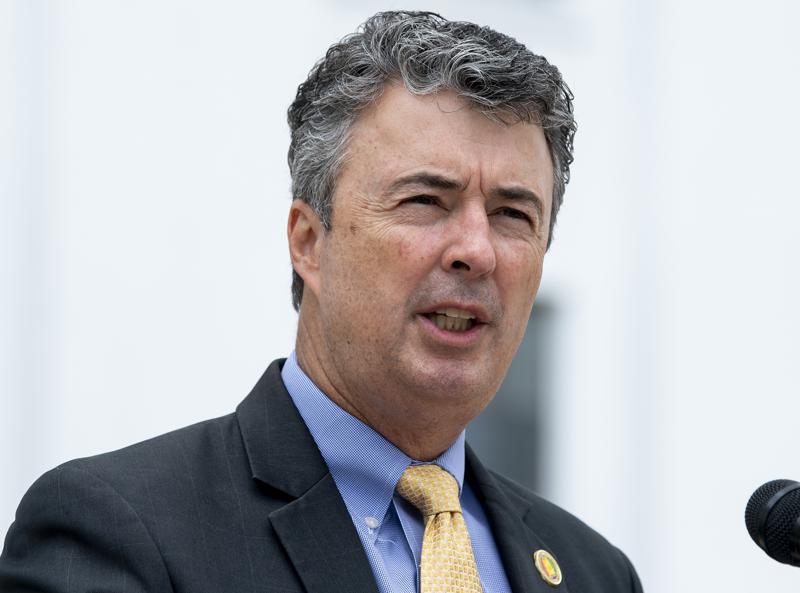
Attorney General Steve Marshall joined twenty other attorneys general in filing a lawsuit against the Centers for Disease Control and Prevention (CDC) for the mask mandate for public travel despite court rulings that it is violating the law. The attorneys general want to eradicate the unlawful mask mandate and obtain a permanent injunction against enforcement. “Since the COVID-19 pandemic began, the CDC has repeatedly overstepped its legal authority with impunity,” stated Marshall. “It has done so based upon its flawed reliance on a limited federal statute authorizing traditional quarantine measures directly related to preventing the interstate spread of the disease. Despite courts consistently ruling against the CDC’s ‘unprecedented assertion of power,’ including a U.S. Supreme Court ruling against the CDC in a case brought by the Alabama Association of Realtors in 2021, the CDC remains defiant. “After being called out for illegally prohibiting evictions and shutting down the nation’s cruise industry for over a year, the CDC continues to impose a mask mandate for traveling on non-private conveyances, including aircraft, trains, road vehicles, and ships. The CDC’s defiance of the law must be challenged, and I have joined 20 of my attorney general colleagues in filing suit against the CDC to halt this illegal mask mandate.” In the press release, Marshall argued that the CDC’s mask mandate harms states and interferes with state laws banning forced masking. The lawsuit argues that the CDC’s mask mandate exceeds the agency’s authority in several ways. First, the statute used to justify the mandate does not authorize economy-wide measures. Second, the statute only authorizes rules directly related to preventing the interstate spread of disease—it does not permit mask requirements for individuals who show no sign of infection. Marshall joined attorneys general from Alaska, Arizona, Arkansas, Florida, Georgia, Idaho, Indiana, Kansas, Kentucky, Louisiana, Mississippi, Missouri, Montana, Nebraska, Ohio, Oklahoma, South Carolina, Utah, Virginia, and West Virginia in filing the lawsuit in the U.S. District Court for the Middle District of Florida on Tuesday.
U.S. opens second COVID boosters to 50 and up, others at risk

Americans 50 and older can get a second COVID-19 booster if it’s been at least four months since their last vaccination, a chance at extra protection for the most vulnerable in case the coronavirus rebounds. The Food and Drug Administration on Tuesday authorized an extra dose of the Pfizer or Moderna vaccine for that age group and for certain younger people with severely weakened immune systems. The Centers for Disease Control and Prevention later recommended the extra shot as an option but stopped short of urging that those eligible rush out and get it right away. That decision expands the additional booster to millions more Americans. Dr. Rochelle Walensky, CDC’s director, said it was especially important for older Americans — those 65 and older — and the 50-somethings with chronic illnesses such as heart disease or diabetes to consider another shot. “They are the most likely to benefit from receiving an additional booster dose at this time,” Walensky said. There’s evidence protection can wane, particularly in higher-risk groups, and for them, another booster “will help save lives,” FDA vaccine chief Dr. Peter Marks said. For all the attention on who should get a fourth dose of the Pfizer and Moderna vaccines, only about half of Americans eligible for a third shot have gotten one — and the government urged them to get up to date. Two shots plus a booster still offer strong protection against severe illness and death, even during the winter surge of the super-contagious omicron variant. The move toward additional boosters comes at a time of great uncertainty, with limited evidence to tell how much benefit an extra dose right now could offer. COVID-19 cases have dropped to low levels in the U.S., but all vaccines are less powerful against newer mutants than earlier versions of the virus — and health officials are warily watching an omicron sibling that’s causing worrisome jumps in infections in other countries. Pfizer had asked the FDA to clear a fourth shot for people 65 and older, while Moderna requested another dose for all adults “to provide flexibility” for the government to decide who really needs one. FDA’s Marks said regulators set the age at 50 because that’s when chronic conditions that increase the risks from COVID-19 become more common. Until now, the FDA had allowed a fourth vaccine dose only for the immune-compromised as young as 12. Vaccines have a harder time revving up severely weak immune systems, and Marks said their protection also tends to wane sooner. Tuesday’s decision allows them another booster, too — a fifth dose. Only the Pfizer vaccine can be used in those as young as 12; Moderna’s is for adults. What about people who got Johnson & Johnson’s single-dose shot? They already were eligible for one booster of any kind. Of the 1.3 million who got a second J&J shot, the CDC said now they may choose a third dose — either Moderna or Pfizer. For the more than 4 million who got Moderna or Pfizer as their second shot, the CDC says an additional booster is only necessary if they meet the newest criteria — a severely weakened immune system or are 50 or older. That’s because a CDC study that tracked which boosters J&J recipients initially chose concluded a Moderna or Pfizer second shot was superior to a second J&J dose. If the new recommendations sound confusing, outside experts say it makes sense to consider extra protection for the most vulnerable. “There might be a reason to top off the tanks a little bit” for older people and those with other health conditions said University of Pennsylvania immunologist E. John Wherry, who wasn’t involved in the government’s decision. But while he encourages older friends and relatives to follow the advice, the 50-year-old Wherry — who is healthy, vaccinated, and boosted — doesn’t plan on getting a fourth shot right away. With protection against severe illness still strong, “I’m going to wait until it seems like there’s a need.” While protection against milder infections naturally wanes over time, the immune system builds multiple layers of defense, and the type that prevents severe illness and death is holding up. During the U.S. omicron wave, two doses were nearly 80% effective against needing a ventilator or death — and a booster pushed that protection to 94%, the CDC recently reported. Vaccine effectiveness was lowest — 74% — in immune-compromised people, the vast majority of whom hadn’t gotten a third dose. To evaluate an extra booster, U.S. officials looked to Israel, which opened a fourth dose to people 60 and older during the omicron surge. The FDA said no new safety concerns emerged in a review of 700,000 fourth doses administered. Preliminary data posted online last week suggested some benefit: Israeli researchers counted 92 deaths among more than 328,000 people who got the extra shot, compared to 232 deaths among 234,000 people who skipped the fourth dose. What’s far from clear is how long any extra benefit from another booster would last, and thus when to get it. “The ‘when’ is a really difficult part. Ideally, we would time booster doses right before surges but we don’t always know when that’s going to be,” said Dr. William Moss, a vaccine expert at the Johns Hopkins Bloomberg School of Public Health. Plus, a longer interval between shots helps the immune system mount a stronger, more cross-reactive defense. “If you get a booster too close together, it’s not doing any harm — you’re just not going to get much benefit from it,” said Wherry. The newest booster expansion may not be the last: Next week, the government will hold a public meeting to debate if everyone eventually needs a fourth dose, possibly in the fall, of the original vaccine or an updated shot. Even if higher-risk Americans get boosted now, Marks said they may need yet another dose in the fall if regulators decide to tweak the vaccine. For that effort, studies in people — of omicron-targeted shots alone or in
University of Alabama to develop CDC-funded campaign addressing vaccine confidence
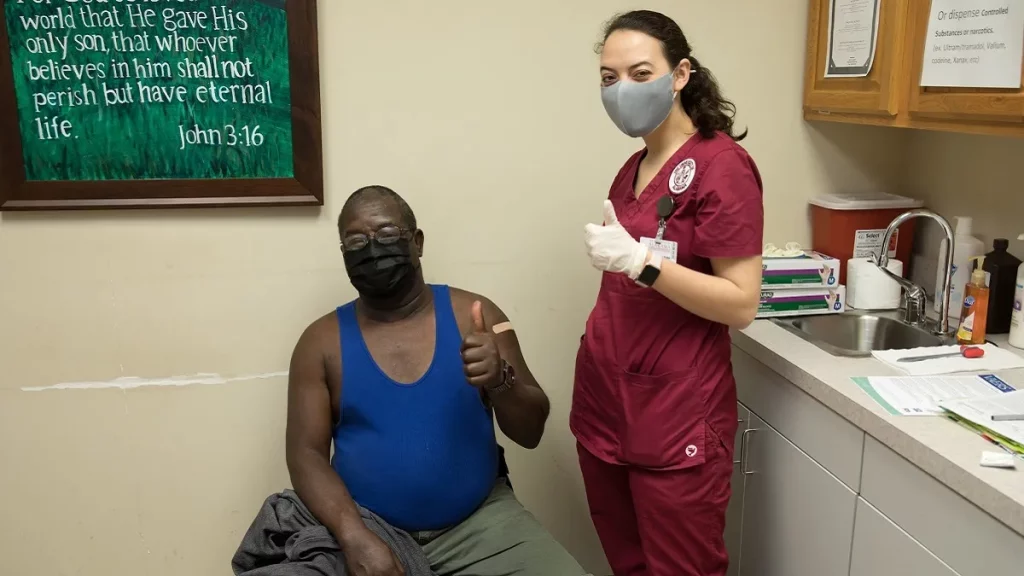
The University of Alabama Capstone College of Nursing was one of 10 schools selected by the American Association of Colleges of Nursing (AACN) to develop a campaign to build confidence in COVID-19 vaccines and dispel health misinformation. AACN was awarded $1 million in funding from the Centers for Disease Control and Prevention (CDC) to launch the Building COVID-19 Vaccine Confidence Among Nurses and in Communities initiative and will provide funding for each university’s targeted campaign. UA’s efforts will be led by the Capstone College of Nursing’s Dr. Haley Townsend, assistant professor and project principal investigator; Dr. Paige Johnson, Saxon Chair of Rural Nursing; and Dr. Sara Kaylor, associate professor. The campaign will emphasize providing education and resources to rural communities. “Our team is thrilled to perform this work that will increase our nurses’ confidence in discussing vaccine hesitancy in Alabama communities, particularly in rural settings,” said Townsend. “We know this project can have a positive impact on the health and future of Alabama. We are humbled and thankful to AACN and the CDC for the funding support to the Capstone College of Nursing.” Campaign leaders will host a town hall-style event for students and faculty to discuss stories surrounding receipt or provision of the COVID-19 vaccine, dispel myths and fears, and offer training on how attendees can motivate others to get vaccinated. With the help of AACN, the Capstone College of Nursing will develop media with success stories and accurate information surrounding COVID-19 vaccines. Through a partnership with Gentry Drugs in Aliceville and CHOICE Inc. in Uniontown, UA nursing students will have the opportunity to provide education and use their training to connect with those who may be reluctant to receive the vaccine. With COVID-19 vaccines widely available, only 65% of Americans are fully vaccinated, according to the CDC. According to the AACN, the initiative was developed to help nursing school faculty and students have effective conversations about COVID-19 vaccinations to boost consumer confidence. Participating schools of nursing will undertake a variety of education and outreach activities to reach individuals and populations at risk. This story originally appeared on the University of Alabama’s website.
U.S. ends asylum restrictions for children traveling alone

Unaccompanied child migrants trying to enter the United States will no longer be denied a chance to seek asylum under new guidance announced by U.S. health authorities. The Centers for Disease Control and Prevention, in announcing the change late Friday night, said: “that expulsion of unaccompanied non-citizen children is not warranted to protect the public health.” The change was announced shortly before a court order was to take effect that would have allowed the Biden administration to expel unaccompanied children seeking asylum under Title 42 authority, which was introduced in March 2020 to prevent the spread of COVID-19. The order remains in place for adults and families traveling with children. Testing and other preventive measures allow children traveling alone to be released to sponsors in the United States, the CDC said. Sponsors are typically family or other close relatives. A federal judge ruled in a lawsuit by the state of Texas that the CDC failed to explain why children traveling alone were exempted from Title 42 and gave the administration a week to appeal. Instead, the CDC lifted the order — but only for unaccompanied children. The Associated Press left a phone message with the office of Texas Attorney General Ken Paxton and also sent an email. There was no immediate response. Migrants have been expelled more than 1.6 million times under Title 42, named for a 1944 public health law. Biden has kept the order in place but exempted unaccompanied children during his first days in office. Prominent Democrats and advocacy groups have been pressing to end Title 42 for all migrants. “It is not a humane or effective solution to securing our border,” U.S. Sen. Dick Durbin, an Illinois Democrat, tweeted on Friday. Republished with the permission of the Associated Press.

